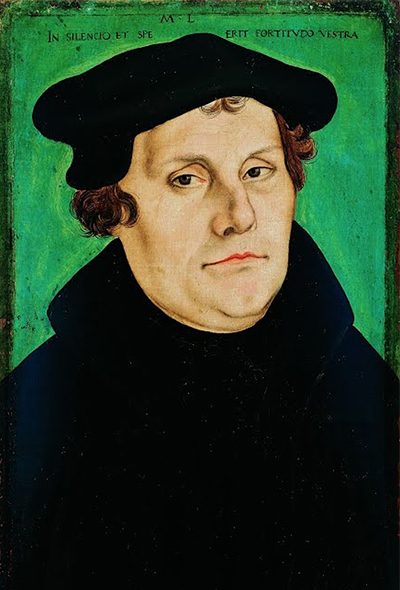During the late 1520s, Lucas Cranach was producing a large number of portraits of his close friend, Martin Luther. This is just one example of that and this painting resides at Museen Böttcherstraße, Ludwig Roselius Museum, Bremen.
This particular portrait was completed as tempera on beech wood, with tempera being the tool of choice for many artists during the Renaissance, before later being replaced by oils. It is another fairly small painting, perhaps suggesting that its intention was to be hung in the smaller houses of the time. Cranach did complete much larger paintings during his career, where the purpose of the piece was different. He was also attempting to promote his friend's cause during this period and encouraged his own workshop to roll out considerable numbers of portraits of Martin Luther, similar to how we are bombarded by political photography at times of elections in the modern era.
Typically, Luther would be portrayed in his Protestant clothing which was dark and modest. This makes it hard to sometimes identify elements upon his body, as there is no real contrast between his layers of clothing. But this would not have concerned the artist as he was attempting to portray a man with modest needs. They were friends for many years and the artist desired to help out his friend's work by creating visual demonstrations of Luther's beliefs. The scripture would always be the most important but a visual signal could help others to strengthen their trust in this figure. Religious and political figures have used art for many centuries and even back then this was not a new idea, but the technical qualities of Cranach, married with the output of his large workshop, meant his involvement could be very beneficial.
The Museen Böttcherstraße, Ludwig Roselius Museum, Bremen holds an impressive collection of art, with a particular focus on Cranach within their highlights. They have set aside a particular area to display his work, known as their Cranach-Raum. Much of their collection came from coffee merchant Ludwig Roselius as a considerable bequeth. You will also find work by the likes of Conrad von Soest, Joos van Cleve and a number of artists that were based in this region, but Cranach is certainly the most famous name to be found here.




